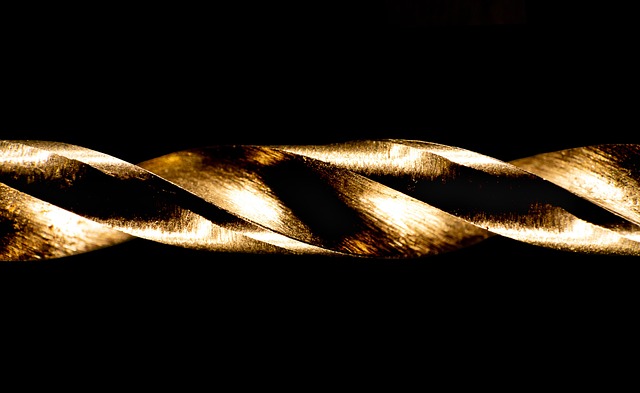Heavy metal fabrication, a cornerstone of industrial engineering, crafts intricate components for diverse sectors like aerospace, automotive, medical devices, and heavy machinery, ensuring superior product quality. Techniques such as CNC machining, laser cutting, and forge welding offer meticulous control over material manipulation. Materials like stainless steel and aluminium empower artisans to realize complex design concepts. Precision industrial metal detailing is versatile, enhancing performance in automotive and aerospace industries through advanced components. Future advancements in automation, robotics, IIoT, AI, and 3D printing promise to revolutionize heavy metal fabrication, driving innovation with unparalleled precision, durability, and design freedom.
Precision industrial metal detailing is a meticulous art that transforms raw materials into intricate, functional pieces. This article delves into the intricacies of heavy metal fabrication, exploring its foundational role in achieving exquisite detail. We uncover the diverse materials and advanced techniques fueling this field’s growth. From automotive to aerospace, applications are vast. Furthermore, we gaze into future trends, predicting innovations set to redefine industrial metalwork.
- Understanding Heavy Metal Fabrication: The Foundation of Precision Detailing
- Materials and Techniques: Unlocking the Potential for Elaborate Designs
- Applications Across Industries: From Automotive to Aerospace
- Future Trends: Shaping the Next Generation of Industrial Metalwork
Understanding Heavy Metal Fabrication: The Foundation of Precision Detailing

Heavy metal fabrication forms the bedrock of precision industrial metal detailing. It involves a series of specialized processes designed to shape and form various types of metals into intricate, exacting components. This foundational process is crucial for creating complex structures found in industries ranging from aerospace and automotive to medical devices and heavy machinery.
Understanding how heavy metal fabrication techniques, such as CNC machining, laser cutting, and forge welding, work together allows for precise control over material removal, shape creation, and structural integrity. This knowledge ensures that every detail, down to the smallest tolerance, can be achieved, ultimately resulting in superior product quality and performance across diverse applications.
Materials and Techniques: Unlocking the Potential for Elaborate Designs

In the realm of precision industrial metal detailing, the choice of materials and techniques plays a pivotal role in unlocking intricate design possibilities. Heavy metal fabrication encompasses a wide array of alloys, each offering unique properties that lend themselves to different artistic visions. From stainless steel’s lustrous finish and exceptional corrosion resistance to aluminium’s light weight and excellent machinability, the metallurgical landscape provides an extensive palette for crafting elaborate structures.
Techniques such as laser cutting, waterjet profiling, and CNC machining have revolutionized industrial metalwork. These advanced methods enable artisans to create complex geometric patterns, delicate engravings, and even intricate 3D sculptures within metal components. The precision afforded by these technologies ensures that designs are not just aesthetically stunning but also structurally sound, pushing the boundaries of what’s achievable in heavy metal fabrication.
Applications Across Industries: From Automotive to Aerospace

Precision industrial metal detailing is a versatile process with applications spanning diverse sectors, from automotive to aerospace. This advanced form of heavy metal fabrication involves meticulous cutting, forming, and finishing techniques to create intricate components that meet stringent tolerances. In the automotive industry, it’s employed to craft high-performance engine parts, exhaust systems, and even lightweight vehicle frames, enhancing both performance and fuel efficiency.
In aerospace, precision metal detailing is crucial for manufacturing critical components like aircraft engines, landing gear, and structural elements. The ability to create complex geometries with tight tolerances ensures the safety and reliability of air travel. This versatility makes precision industrial metal detailing an indispensable process across various industries, driving innovation and pushing the boundaries of what’s possible in modern manufacturing.
Future Trends: Shaping the Next Generation of Industrial Metalwork

The future of precision industrial metal detailing is ripe with innovation, driven by advancements in technology and a growing demand for complex, customized parts across various industries. Automation and robotics are set to play a significant role, enhancing efficiency and accuracy in heavy metal fabrication processes. Smart manufacturing techniques, such as Industrial Internet of Things (IIoT) integration and artificial intelligence (AI), will enable real-time data analysis, predictive maintenance, and optimized production workflows.
This digital transformation promises to reduce lead times, improve quality control, and open doors for even more intricate designs. 3D printing, for instance, is evolving rapidly, allowing for the creation of complex geometric structures that were previously unattainable through traditional methods. As these trends evolve, we can expect to see a new generation of industrial metalwork characterized by unparalleled precision, enhanced durability, and unprecedented design freedom in heavy metal fabrication.
Precision industrial metal detailing, rooted in heavy metal fabrication techniques, continues to evolve and shape diverse sectors. As materials science advances and innovative techniques emerge, the potential for elaborate designs in automotive, aerospace, and other industries expands exponentially. Future trends promise smarter, more sustainable manufacturing processes, ensuring that heavy metal fabrication remains a cornerstone of modern industry.
